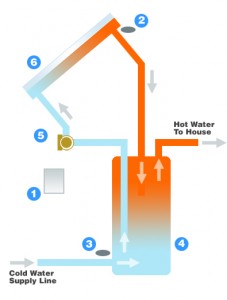There are two main types of solar water heaters, active and passive.
Passive Solar Water Heaters
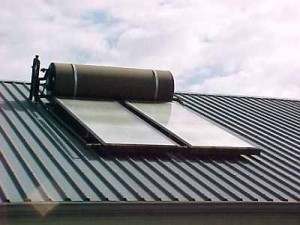
passive rooftop solar water heater
A passive solar water heater stores the heat in a large rooftop tank that also serves as the collector. These types of systems are unattractive and less efficient than active systems. The reason these are called passive is that they do not automatically circulate water when the sun is shining. So when it’s cold or night time, the water cools off. There is usually a second tank in the house that gets the feed from the passive storage tank. The house tank only receives heat from the solar tank when hot water is being drawn in the house. These systems are popular in parts of the world where there is no electricity, or electric service is unreliable, such as rural China and the Caribbean. Passive systems can typically produce 40-50% of the hot water needed by a household. We only sell active systems.
Active Solar Water Heaters
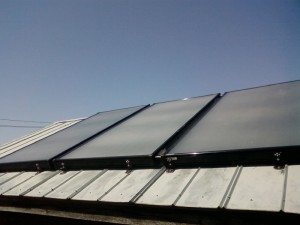
Solar panels in an active solar water heater
Active solar water heaters use a pump to circulate fluid through a rooftop solar collector, capture heat, then return to the main tank in the house. They are intelligently controlled by electronics with a predetermined setting. Our systems start to run when the solar collector is 16 degrees warmer than the tank. Solar water heaters differ from solar electric systems, in that they are collecting heat directly, not converting the sunlight in electricity. Because this is a simple transfer of heat, it is very efficient. Solar water heater panels can capture over 60% of the energy available to it. Solar electric panels typically are only 15-18% efficient, and are much more expensive to install. For this reason solar water heating is much more widely used than solar electric, and why it makes so much sense to install a solar water heater before considering solar electric(photovoltaic). Active solar water heaters con provide 70-100% of the hot water used in a typical home in some climates.
There are several different types of active solar water heaters.
Open Loop Solar Water Heaters
Open loop solar water heaters work by directly circulating the potable water in the water heater tank through the collector and back down to the tank. They are very efficient, but can only be used in climates that rarely freeze. Otherwise the water in the collectors may freeze and burst the pipes in the collector, leading to costly repairs. The open loop systems we sell do come with a freeze drip valve which can preserve the solar panel in mild freezing conditions. In climates that experience more than a few light freezes per year, a closed loop solar water heater must be used.
Closed Loop Solar Water Heaters
Closed Loop Solar Water Heaters are designed to withstand freezing in any climate. They work by circulating an antifreeze solution through the collector. This is usually a mix of propylene glycol and water, this mix should be adjusted depending on the expected lowest temperature in the climate which it is installed. The heat is delivered to the tank by an internal heat exchanger. The heat exchanger is simply a coil that spirals through the tank and acts as a boundary between the glycol mix and the potable water in the tank.
Drainback Solar Water Heaters
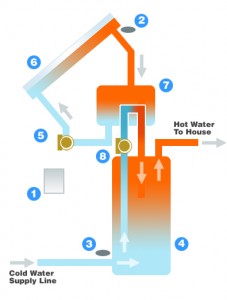
drainback solar water heater
Drainback solar water heaters are a type of closed loop solar water heater. They still have a heat exchanger either in the tank or externally. These systems work by pumping water from a small drainback tank(usually 10 gallons) through the collector, capturing heat, then it returns through a heat exchanger before flowing back into the drainback tank where it is cycled again. Potable water from the main tank is sent through the heat exchanger to capture the heat and returned to the main tank.
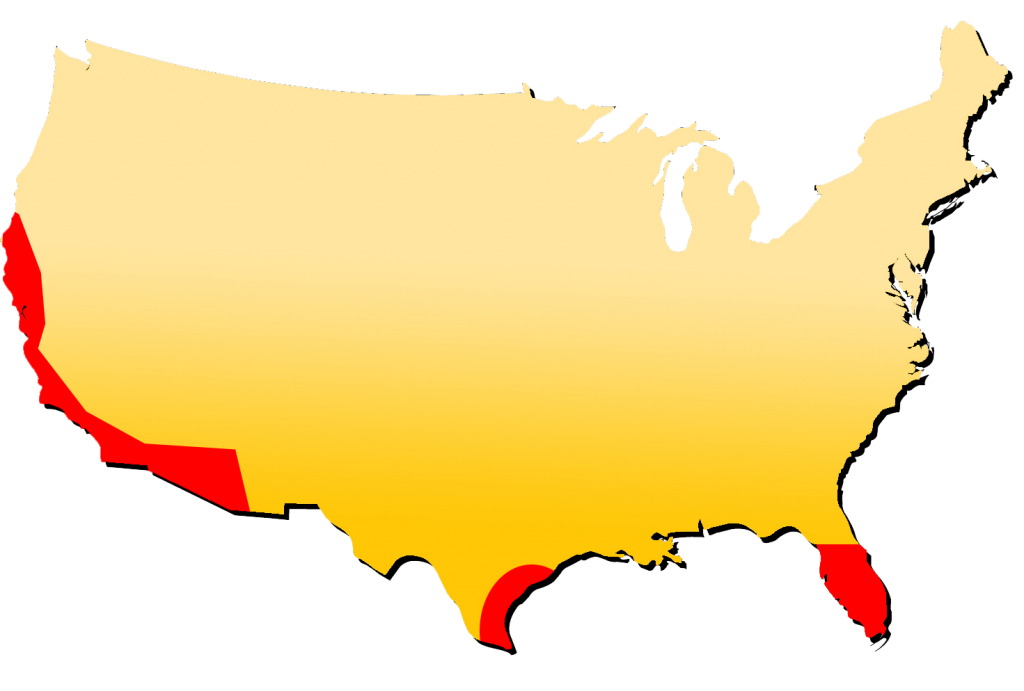
In the U.S., open loop solar water heaters should only be installed in the areas shown in red, which rarely freeze. Closed loop systems may be installed anywhere.

